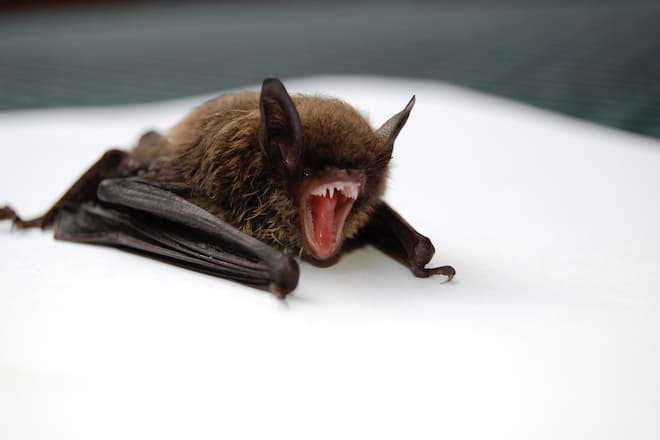The Little Brown Bat is so far the best-studied bat species in Ontario and is scientifically known as Myotis lucifugus and weighs a light 5.5 to 12.5 grams. These tiny bat species can grow up from 8 cm to 9 cm in length and dwells in caves, forests, caverns, rock crevices, and even abandoned mine shafts. The Little Brown Bat is often seen in a colony of other bats and is not territorial since it will migrate wherever is pleasant.
If you think you have a little brown bat in your attic or anywhere on your property, contact Bat Removal Peterborough for quick and affordable services.
this, their natural habitat has been under threat by environmental factors such as deforestation and disturbance which has forced them to find shelter elsewhere and this is why we see an increasing presence in urban sightings. Apart from these issues, bats little brown bats are facing another challenge namely disease. This disease targets primarily the little brown bat and its impact is felt in such a manner that it has scientists worry about it.
This disease is called the White-Nose Syndrome and can be easily recognized as white frosting on the tip of the bat’s nose. This fungal disease was discovered pretty recently in 2006 and has the capacity to wipe out 90%-100% of an entire colony of little brown bats.
White-Nose Syndrome is a disease that springs up on hibernating bats and is caused by a fungus that thrives in colder temperatures. As a result of this fungus, bats will die because of dehydration and starvation.
The White-Nose Syndrome has been originally found in the United States, but as of 2019 has also been found in Saskatchewan 2019. From there on, it was clear that the White-Nose Syndrom was also spreading throughout Canada. According to “The Species at Risk Act” statement analysis published by the Canadian Government, “…These declines are considered by some experts to be the most rapid decline of mammals ever documented anywhere. At the rate at which the disease is spreading, scientists predict that the entire Canadian range of these bats will be infected within 12 to 18 years. It is likely that without additional actions to limit the spread of WNS and protections to help provide for the survival of possibly resilient individuals, these three bat species will face extirpation (i.e. they would no longer exist in the wild in Canada, but would exist elsewhere in the wild).
As of today, there are no known cures for this fungal infection that is wiping out little brown bat populations throughout Ontario and Quebec. As earlier mentioned, Little Brown Bats find themselves in urban areas and for this reason bat control specialists follow stringent rules so as not to harm or hurt them. Whenever a bat is found, it cannot be removed immediately but will depend on what season and what condition the bat is found in. For example, bats cannot be removed during their maternity period. For more information, contact the professional bat removal specialists from Wildlife Removal Peterborough and have them remove bats for you at an affordable price.

